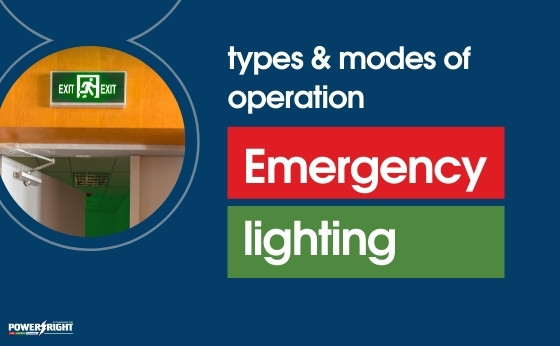
One of the crucial aspects of building safety is emergency lighting. It is designed for an emergency, such as a fire or power cut, when the main power supply is interrupted and normal electrical illumination does not work. Such an emergency could lead to darkness and danger to occupants due to either physical hazards or panic.
The purpose of the emergency lighting system is to enable prompt evacuation of the premises. This safety solution usually includes a combination of general luminaires and exit signs featuring an emergency lighting function.
It is the first step of installing an emergency lighting system. A fire risk assessor, a responsible person and a professional designer should decide where the emergency light is required.
Moreover, it is necessary to choose the mode of operation, type of power supply, and duration of emergency light. The system has to match the commercial building use and type.
There are two main modes of operation: maintained or non-maintained.
Maintained luminaire means the emergency lights are on at all times. This mode is preferable for places of assembly such as cinemas, nightclubs, theatres, and halls. The lights are usually dimmed when the premises are occupied, so escape lighting prevents total darkness.
Even if the power does not fail in evacuation situations, the public spaces utilize maintained exit signs to provide clear escape route guidance.
Non-maintained luminaire means emergency lights only are on when the general power supply fails. Non-maintained are usually installed in a workplace or buildings where artificial lighting is on when the premises are occupied.
There are two technologies to choose from when designing emergency lighting systems: self-contained and central battery systems.
Self-contained emergency lights contain batteries. They are fast and easy to install. It is possible to extend the system with additional luminaires.
Pros:
Cons:
Central battery systems include a central power source supplying the emergency lights and exit signs via cables. These systems have long battery life and are easy to maintain.
Pros:
Cons:
Emergency lighting systems, including escape route lighting and exit signs, must work faultlessly to provide appropriate visual conditions and direction finding in an emergency. The main aspects to consider when selecting the systems are mode of operation and power supply type.
Generally speaking, the choice of the power supply is rather cost-determined. If longevity and low maintenance are the priorities, it seems acceptable to invest in a central battery for a large project. Usually, installation and luminaire costs are the principal considerations, especially on smaller jobs. That is why the self-contained luminaire might be the most popular choice.